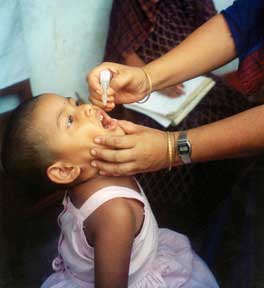|
Copayment
A patient's copayment or copay is the patient's share of the cost for goods or services rendered, with the other share ("co" = with) paid by the patient's insurance company. The patient's co-payment is usually paid directly to the provider, but is instead paid indirectly through their insurance company in the case of Medicare Part D patients enrolled in the Medicare Prescription Payment Plan, which began on January 1st, 2025. It may be defined in an insurance policy and paid by an insured person each time a medical service is accessed. It is technically a form of coinsurance, but is defined differently in health insurance where a coinsurance is a percentage payment after the deductible up to a certain limit. It must be paid before any policy benefit is payable by an insurance company. Copayments do not usually contribute towards any policy out-of-pocket maximum, whereas coinsurance payments do. Insurance companies use copayments to share health care costs to prevent moral haz ... [...More Info...] [...Related Items...] OR: [Wikipedia] [Google] [Baidu] |
Drug Coupons
A drug coupon is a coupon intended to help consumers save money on pharmaceutical drugs. They are offered by drug companies or distributed to consumers via doctors and pharmacists, and most can be obtained online. There are drug coupons for drugs from many categories such as cholesterol, acne, migraine, allergies, etc. Drug coupons as pharmaceutical marketing Direct-to-consumer or "DTC" marketing of prescription drugs is common in the United States. Patients frequently inquire about or request medications they have seen advertised in print or on television. Pharmaceutical companies use drug coupons as a marketing tool to stimulate demand for their products. Drug coupons are commonly offered for new products to stimulate demand or ameliorate high co-pays for non-formulary (non-preferred products) as a way to level the playing field and remove the disincentive for using a drug that is not covered by insurance. Restrictions In an effort to avoid unregulated resale of dru ... [...More Info...] [...Related Items...] OR: [Wikipedia] [Google] [Baidu] |
Coinsurance
In insurance, co-insurance or coinsurance is the splitting or spreading of risk among multiple parties. In the United States In the U.S. insurance market, co-insurance is the joint assumption of risk between the insurer and the insured. In title insurance, it also means the sharing of risks between two or more title insurance companies. In health insurance In health insurance, copayment is fixed while co-insurance is the percentage that the insured pays after the insurance policy In insurance, the insurance policy is a contract (generally a standard form contract) between the insurer and the policyholder, which determines the claim (legal), claims which the insurer is law, legally required to pay. In exchange for an initial ...'s deductible is exceeded, up to the policy's stop loss. It can be expressed as a pair of percentages with the insurer's portion stated first, or just a single percentage showing what the insured pays. Once the insured's out-of-pocket expenses equal th ... [...More Info...] [...Related Items...] OR: [Wikipedia] [Google] [Baidu] |
Healthcare In The United States
Healthcare in the United States is largely provided by private sector healthcare facilities, and paid for by a combination of public programs, private insurance, and out-of-pocket payments. The U.S. is the only developed country without a system of universal healthcare, and a significant proportion of its population Health insurance coverage in the United States, lacks health insurance. The United States List of countries by total health expenditure per capita, spends more on healthcare than any other country, both in absolute terms and as a percentage of GDP; however, this expenditure does not necessarily translate into better overall health outcomes compared to other developed nations. In 2022, the United States spent approximately 17.8% of its Gross Domestic Product (GDP) on healthcare, significantly higher than the average of 11.5% among other high-income countries. Coverage varies widely across the population, with certain groups, such as the elderly, disabled and low-income ... [...More Info...] [...Related Items...] OR: [Wikipedia] [Google] [Baidu] |
Health Insurance
Health insurance or medical insurance (also known as medical aid in South Africa) is a type of insurance that covers the whole or a part of the risk of a person incurring medical expenses. As with other types of insurance, risk is shared among many individuals. By estimating the overall risk of health risk and health system expenses over the risk pool, an insurer can develop a routine finance structure, such as a monthly premium or payroll tax, to provide the money to pay for the health care benefits specified in the insurance agreement. The benefit is administered by a central organization, such as a government agency, private business, or not-for-profit entity. According to the Health Insurance Association of America, health insurance is defined as "coverage that provides for the payments of benefits as a result of sickness or injury. It includes insurance for losses from accident, medical expense, disability, or accidental death and dismemberment". A health insurance policy i ... [...More Info...] [...Related Items...] OR: [Wikipedia] [Google] [Baidu] |
Health Care Costs
A health system, health care system or healthcare system is an organization of people, institutions, and resources that delivers health care services to meet the health needs of target populations. There is a wide variety of health systems around the world, with as many histories and organizational structures as there are countries. Implicitly, countries must design and develop health systems in accordance with their needs and resources, although common elements in virtually all health systems are primary healthcare and public health measures. In certain countries, the orchestration of health system planning is decentralized, with various stakeholders in the market assuming responsibilities. In contrast, in other regions, a collaborative endeavor exists among governmental entities, labor unions, philanthropic organizations, religious institutions, or other organized bodies, aimed at the meticulous provision of healthcare services tailored to the specific needs of their respective ... [...More Info...] [...Related Items...] OR: [Wikipedia] [Google] [Baidu] |
Moral Hazard
In economics, a moral hazard is a situation where an economic actor has an incentive to increase its exposure to risk because it does not bear the full costs associated with that risk, should things go wrong. For example, when a corporation is insured, it may take on higher risk knowing that its insurance will pay the associated costs. A moral hazard may occur where the actions of the risk-taking party change to the detriment of the cost-bearing party after a financial transaction has taken place. Moral hazard can occur under a type of information asymmetry where the risk-taking party to a transaction knows more about its intentions than the party paying the consequences of the risk and has a tendency or incentive to take on too much risk from the perspective of the party with less information. One example is a principal–agent approach (also called agency theory), where one party, called an agent, acts on behalf of another party, called the principal. However, a principa ... [...More Info...] [...Related Items...] OR: [Wikipedia] [Google] [Baidu] |
Chronic Condition
A chronic condition (also known as chronic disease or chronic illness) is a health condition or disease that is persistent or otherwise long-lasting in its effects or a disease that comes with time. The term ''chronic'' is often applied when the course of the disease lasts for more than three months. Common chronic diseases include diabetes, functional gastrointestinal disorder, eczema, arthritis, asthma, chronic obstructive pulmonary disease, autoimmune diseases, genetic disorders and some viral diseases such as hepatitis C and acquired immunodeficiency syndrome. An illness which is lifelong because it ends in death is a terminal illness. It is possible and not unexpected for an illness to change in definition from terminal to chronic as medicine progresses. Diabetes and HIV for example were once terminal yet are now considered chronic, due to the availability of insulin for diabetics and daily drug treatment for individuals with HIV, which allow these individuals to live wh ... [...More Info...] [...Related Items...] OR: [Wikipedia] [Google] [Baidu] |
Patent
A patent is a type of intellectual property that gives its owner the legal right to exclude others from making, using, or selling an invention for a limited period of time in exchange for publishing an sufficiency of disclosure, enabling disclosure of the invention."A patent is not the grant of a right to make or use or sell. It does not, directly or indirectly, imply any such right. It grants only the right to exclude others. The supposition that a right to make is created by the patent grant is obviously inconsistent with the established distinctions between generic and specific patents, and with the well-known fact that a very considerable portion of the patents granted are in a field covered by a former relatively generic or basic patent, are tributary to such earlier patent, and cannot be practiced unless by license thereunder." – ''Herman v. Youngstown Car Mfg. Co.'', 191 F. 579, 584–85, 112 CCA 185 (6th Cir. 1911) In most countries, patent rights fall under private la ... [...More Info...] [...Related Items...] OR: [Wikipedia] [Google] [Baidu] |
Healthcare In Germany
Germany has a universal Single-payer healthcare#History of the term, multi-payer health care system paid for by a combination of statutory health insurance (') and private health insurance ('). The #Economics, turnover of the national health sector was about US$368.78 billion (€287.3 billion) in 2010, equivalent to 11.6 percent of gross domestic product (GDP) and about US$4,505 (€3,510) per capita.A. J. W. Goldschmidt: Der 'Markt' Gesundheitswesen. In: M. Beck, A. J. W. Goldschmidt, A. Greulich, M. Kalbitzer, R. Schmidt, G. Thiele (Hrsg.): Management Handbuch DRGs, Hüthig / Economica, Heidelberg, 1. Auflage 2003 (): S. C3720/1-24, with 3 revisions / additional deliveries until 2012 According to the World Health Organization, Germany's Health system, health care system was 77% government-funded and 23% privately funded as of 2004. In 2004 Germany ranked thirtieth in the world in life expectancy (78 years for men). Physician density in Germany is 4.5 physicians per 1000 inhabi ... [...More Info...] [...Related Items...] OR: [Wikipedia] [Google] [Baidu] |
RAND
The RAND Corporation, doing business as RAND, is an American nonprofit global policy think tank, research institute, and public sector consulting firm. RAND engages in research and development (R&D) in several fields and industries. Since the 1950s, RAND research has helped inform United States policy decisions on a wide variety of issues, including the Cold War space race, the U.S. involvement in the Vietnam War, the U.S.–Soviet nuclear arms confrontation, the creation of the Great Society social welfare programs, and national health care. RAND originated as "Project RAND" (from the phrase "research and development") in the post-war period immediately after World War II. The U.S. Army Air Forces established Project RAND with the objective of investigating long-range planning of future weapons. Douglas Aircraft Company was granted a contract to research intercontinental warfare. Project RAND later evolved into RAND, and expanded its research into civilian fields suc ... [...More Info...] [...Related Items...] OR: [Wikipedia] [Google] [Baidu] |
Asthma
Asthma is a common long-term inflammatory disease of the airways of the lungs. It is characterized by variable and recurring symptoms, reversible airflow obstruction, and easily triggered bronchospasms. Symptoms include episodes of wheezing, coughing, chest tightness, and shortness of breath. A sudden worsening of asthma symptoms sometimes called an 'asthma attack' or an 'asthma exacerbation' can occur when allergens, pollen, dust, or other particles, are inhaled into the lungs, causing the bronchioles to constrict and produce mucus, which then restricts oxygen flow to the alveoli. These may occur a few times a day or a few times per week. Depending on the person, asthma symptoms may become worse at night or with exercise. Asthma is thought to be caused by a combination of genetic and environmental factors. Environmental factors include exposure to air pollution and allergens. Other potential triggers include medications such as aspirin and beta blockers. Diag ... [...More Info...] [...Related Items...] OR: [Wikipedia] [Google] [Baidu] |





